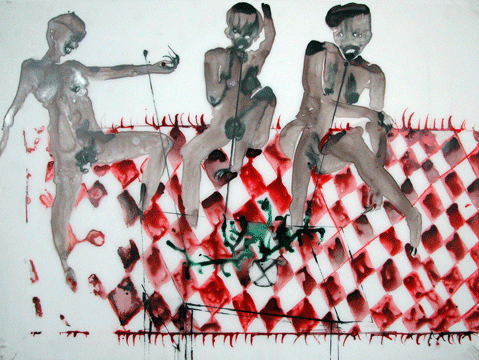

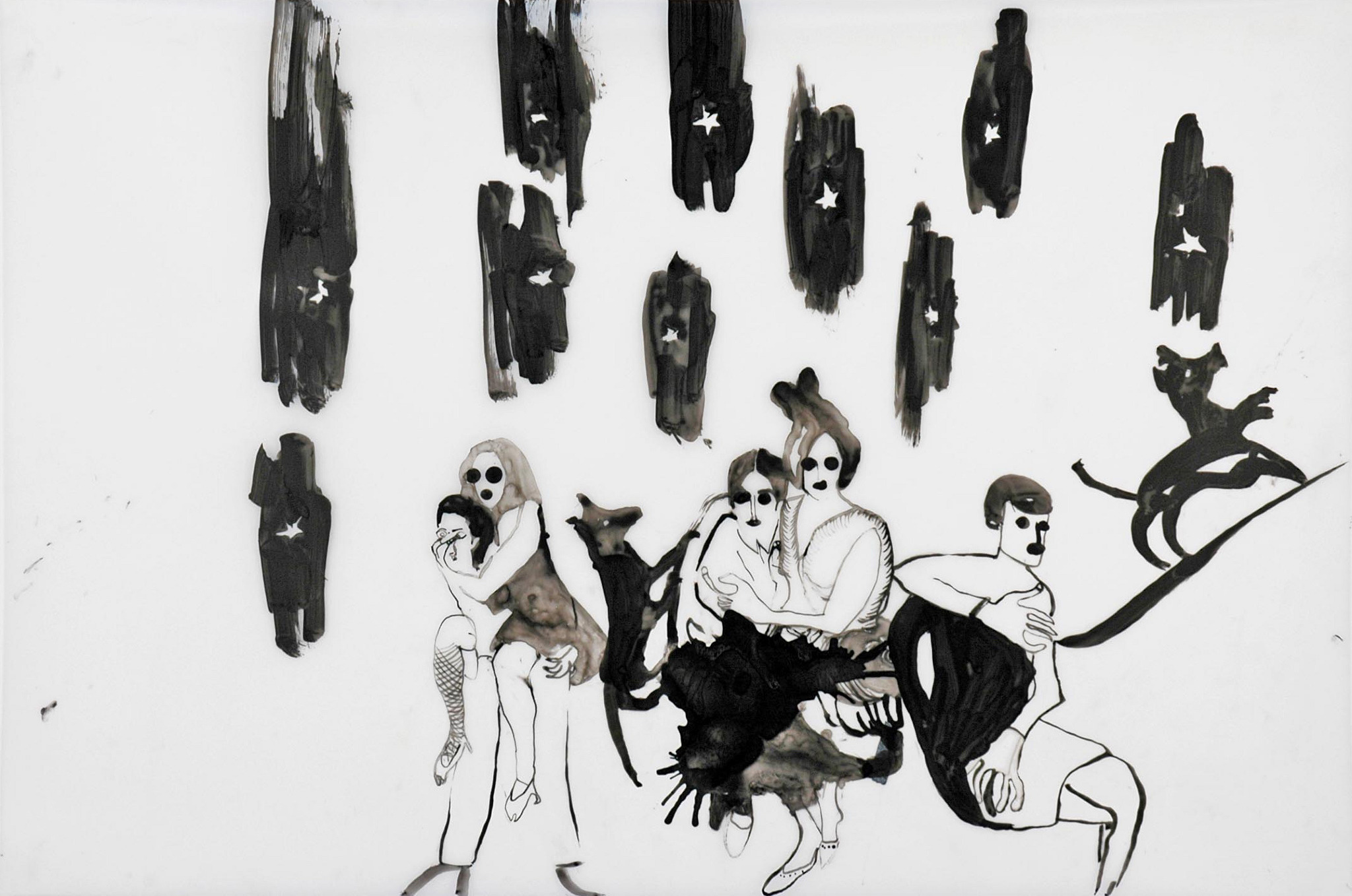
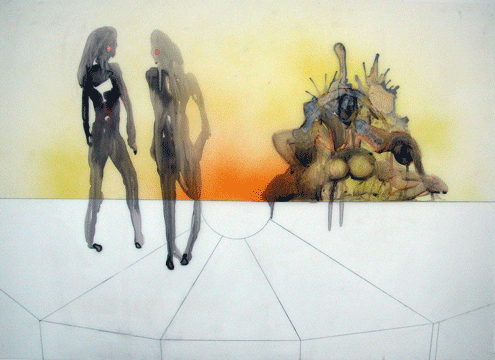

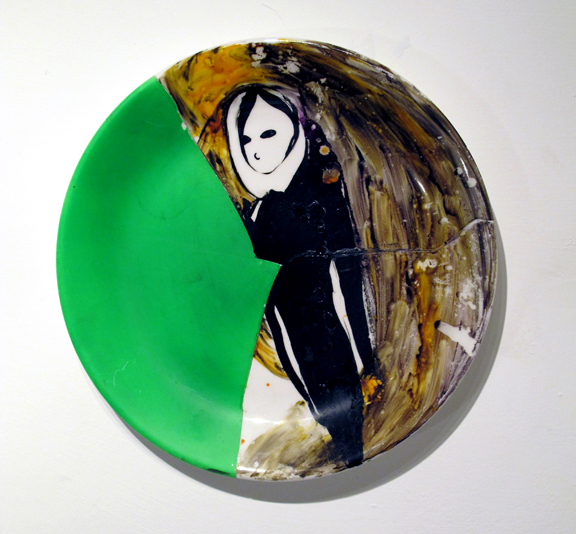



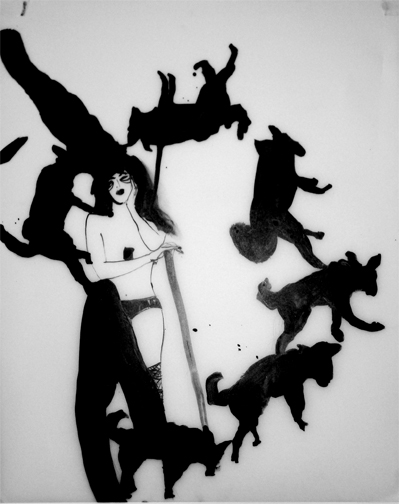
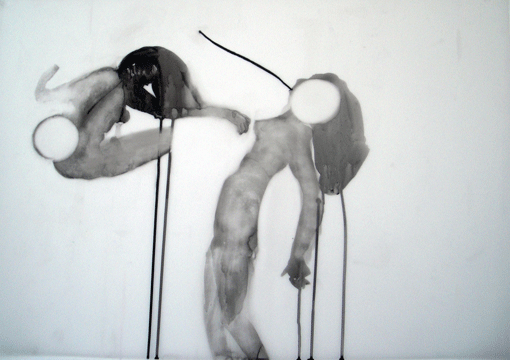
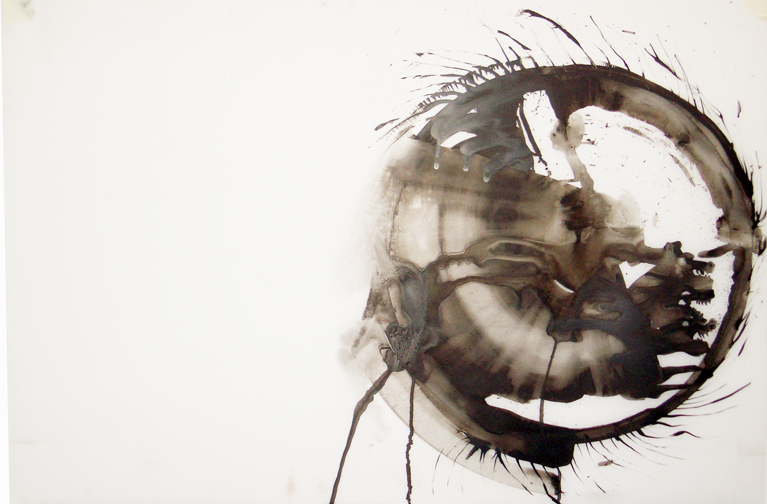


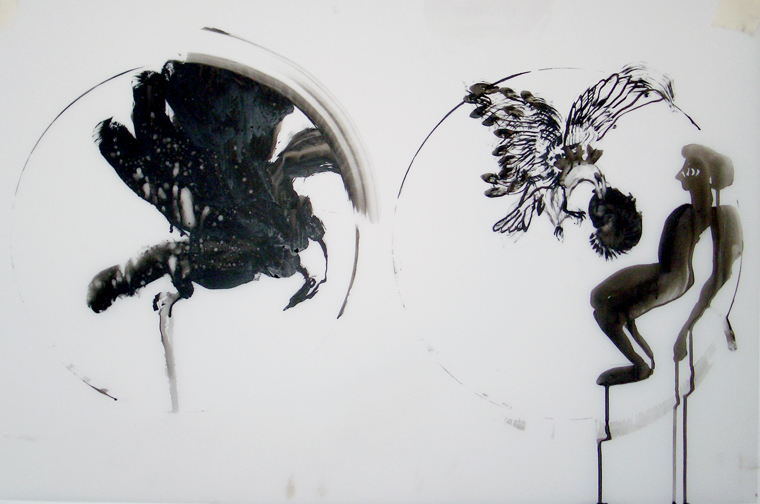

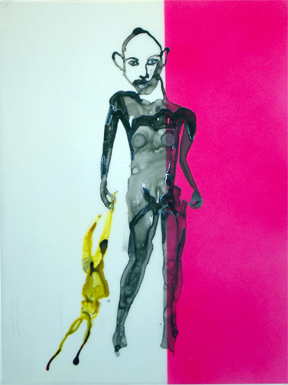













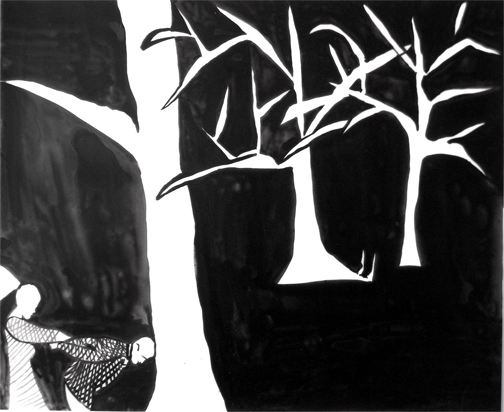
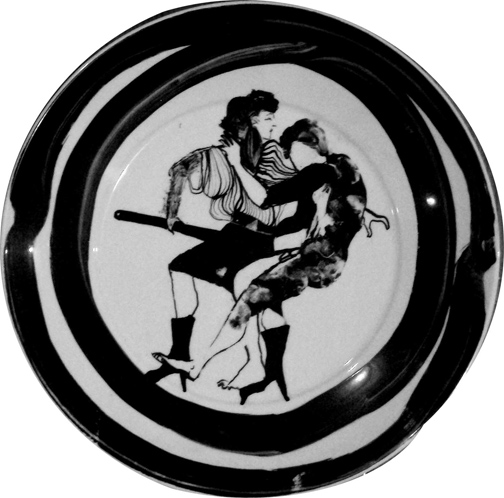
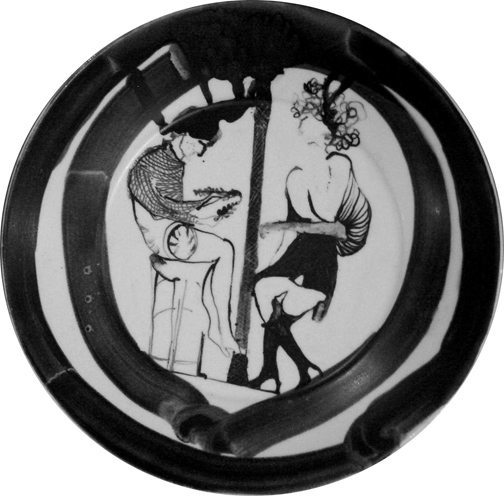
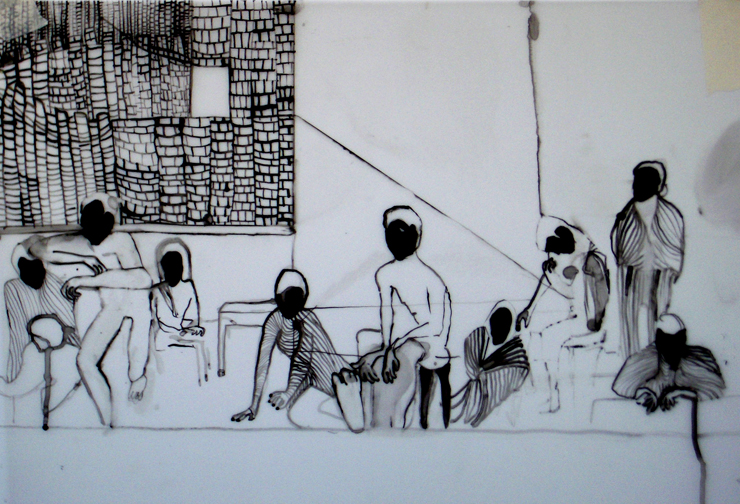





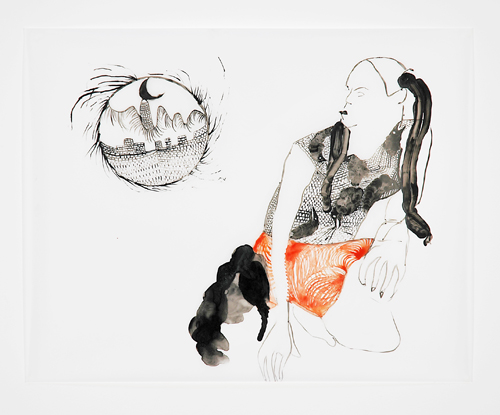

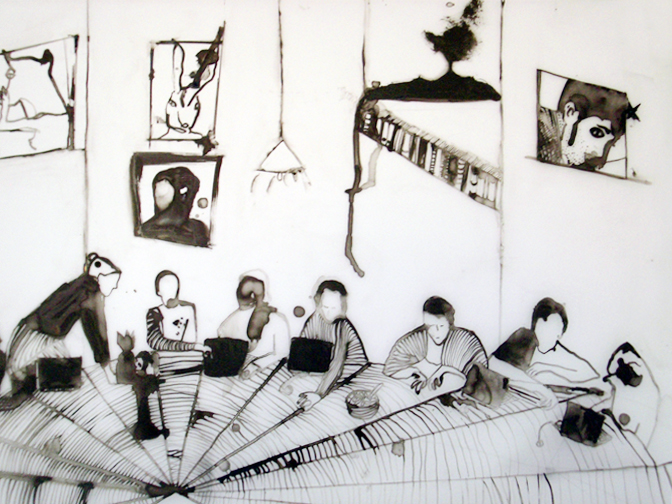
"Cnaani’s ink on mylar drawings have an oddly intimate and claustrophobic atmosphere – as though the viewer were present or even participating in the events depicted. Their usually blank backgrounds prevent a precise identification of the locations in which they are set, allowing for maximum interpretive flexibility, yet the figures are often squarely in the foreground, confronting the viewer with their disturbing actions, as in the Administrative Detention (2004) series. The title refers to a colonialist euphemism for an all too common circumstance, whether for Palestians or inmates at Guantanamo Bay - the state of legal and political limbo in which many activists and terrorists exist, having been arrested and held, sometimes indefinitely, without being charged with any specific crime or being tried. In these elegant drawings, where the ink is allowed to pool and dry in dense, sensuous layers, we are confronted with scenes that appear to have little to do with the title of the series.
"The ambiguity of the images allows both Cnaani and the viewer to explore the erotic aspects of fighting, arrest, and occupation seemingly without passing moral judgment on either perpetrators or victims. The choice to hide the faces of both characters prevents the viewer from identifying emotionally with either of them, and instead fosters the preservation of a broad gray area for debate. The unmistakable critical edge of the images stems, ironically perhaps, from their very refusal to give in to the pressure to take sides and their unwillingness to judge and label any of the figures as belonging to the “good guys” or the “bad guys”, “us” or “them”. By retreating to the private sphere in these drawings, dealing with the entwined subjects of occupation and uprising, and focusing on individuals or small groups of people, Cnaani also invites the viewer to think of the personal impact of the current state of affairs in the West Bank and Gaza Strip."
--Elizabeth M. Grady, Internal Occupation, 2005